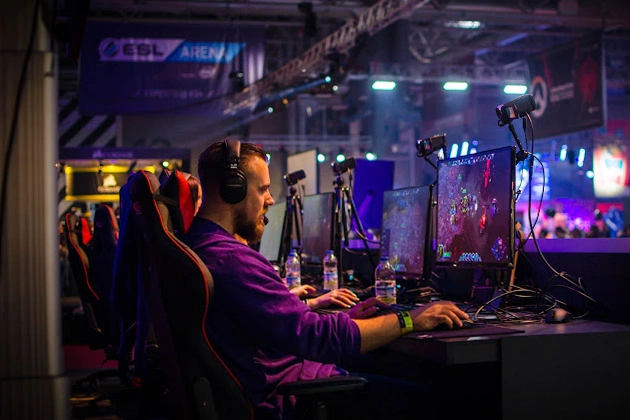The gaming industry has been one of the fastest faced changing industries across the globe over the last decade. From its early start as hobbyists using computers at the beginning, to where it currently stands now.
Gaming hasn’t just had a big impact on how we chill out in our own time; it has also had a huge impact on how we socialize. These days, gaming has risen up to become one of the biggest industries in the world, even to the point that it now stands up against industry giants, such as Hollywood.
One of the main reasons for the industry growing so quickly is the rapidly advancing technology, and the release of hugely popular games such as Counter Strike 2, which helped to push gaming into the spotlight and even spawned gaming betting sites. Console, PC, or mobile play is no longer an alternative activity but a mass phenomenon with an incredible economic and cultural impact.
The History of the Industry
The history of video games began during the 1970s with the advent of simple arcade games. Pong and Space Invaders introduced interaction to screens for the very first time. The 1980s and 1990s witnessed gaming consoles such as the Nintendo Entertainment System and the Sega Genesis take gaming into homes across the globe. With the increase in technology came the increase in complexity and immersion of games. Super Mario 64, The Legend of Zelda, and Final Fantasy VII led the way for story complexity and gameplay mechanics that would become the benchmark for gaming today.
The turn of the millennium brought the advent of internet play. New consoles were released that started to rely on the internet more than ever, such as Xbox Live and the PlayStation Network, meaning gamers were no longer stuck to playing couch co-ops with friends at home. Suddenly, they could play with other gamers from all over the world, and even take part in competitions and watch esports online.
Economic Impact and Revenue Growth
Over time, gaming has managed to become a multi-billion-dollar industry. This amount is set to rise as new markets evolve and technology is made accessible. The advent of mobile gaming has been the genesis of most of the growth, with a low entry point and extensive customers.
Instead of just making money from sales, developers and publishers are now making money from more than one stream, including video game sales, microtransactions, subscription models, advertising, and merchandising.
Some of the biggest-name games out there, such as Call of Duty, FIFA, and Grand Theft Auto, earn hundreds of millions of dollars within a single year. And tons of free-to-play revenue games have started surpassing other games’ revenue, showing that microtransactions can often be so much more valuable.
Esports and Competitive Gaming
Competitive gaming has evolved into a genuine sport. Esports events are watched by millions of fans and fill stadiums all over the world. Prize pools are in the tens of millions, and pro gamers have become celebrities with sponsorships, fan bases, and media coverage to match.
Games like League of Legends, Dota 2, and Counter Strike 2 are spearheading this revolution. Not only do these games possess a high skill ceiling, but they are also broadcast quality, with professional announcers, official tournaments, and leagues by region. Success on these games within the esports community has compelled many other games to feature competitive elements.
Platforms such as Twitch and YouTube Gaming have further amplified the exposure of esports. Supporters no longer tune in merely for tournaments but for everyday gameplay, forging parasocial relationships with streamers and groups surrounding those interests.
Mobile Gaming and Accessibility
Mobile gaming has transformed the gaming industry. With billions of smartphones in existence, nearly everyone can play games. Games like Clash of Clans, Candy Crush, and PUBG Mobile have attracted humongous global audiences, some of whom had never played games on consoles or PCs previously.
The strength of mobile games is their accessibility and ease of use. They are mostly free to download, with short-game design meaning that they can be played in short spaces of time, making them perfect for the casual gamer. But because they have in-app purchases and advertisement models, revenue is potentially colossal. Where consoles are prohibitively expensive, mobile gaming is the dominant mode of play.
Furthermore, the use of cloud gaming platforms like Xbox Cloud Gaming and NVIDIA GeForce Now is allowing console-level play on mobile devices, further blurring the lines between platforms and deepening gaming’s reach.
Streaming and Game Content Creation
Another such driving force behind the rise of gaming is content creation. Twitch, YouTube, and TikTok have opened doors for gamers to share their experiences with massive audiences. There are some creators and streamers with millions of followers and earning huge revenues through subscriptions, donations, sponsorships, and advertising income.
This shift has turned gaming into a participatory entertainment. Viewers are no longer passive; they engage with streamers in live chat, influence gameplay through polls and recommendations, and even join multiplayer sessions. These communities build immersive involvement and devotion, turning games into ongoing cultural phenomena and not one-time events.
Games themselves are also being made with streamability in mind. Creators now consider how their games will appear on streams and whether their gameplay would be conducive to going viral. This mutual relationship between game creation and content creation has added a new layer to the gaming ecosystem.
Cultural Influence and Mainstream Acceptance
Gaming is no longer in niche cliques. It is now an integral part of popular culture. Video game characters Mario, Master Chief, and Lara Croft are as familiar with the cultural vista as movie and TV characters. Games are now an even form of storytelling alongside books and movies, tackling themes of sophistication such as identity, morality, and mental health.
Celebrities continually engage in gaming. Musicians drop music via virtual concerts within games like Fortnite. Sports stars engage in game-branded charity tournaments. Fashion brands create in-game clothing lines. All these render gaming culturally valid and mainstream.
Also, the stereotype previously linked with gaming is rapidly disappearing. Gaming is no longer a hobby that can be mentally challenging, socially interactive, and even career-enhancing. There are esports programs and clubs in schools, scholarships for gamings offered in colleges, and employers value skills learned through gaming such as teamwork, strategic thinking, and problem-solving.
Technological Advancements Driving Growth
Technological advancement has played a very big role in the growth of the industry. The new consoles and computers have powerful hardware with photorealistic graphics, ray tracing, and near-instant load times. All this increases the level of immersion and creates experiences as immersive as blockbuster films.
Virtual reality (VR) and augmented reality (AR) are also expanding the boundaries of what games can be. Technology like the Meta Quest and Apple Vision Pro enables fully immersive worlds to enter the living room. Meanwhile, AR games like Pokémon GO blend the worlds of virtual and reality together, enabling new types of play that engage users in innovative ways.
Artificial intelligence is revolutionizing both player experience and game design. Intelligent NPC behavior, procedural content generation, and dynamic storytelling provide a different experience on every playthrough. AI is also used in community moderation, accessibility, and performance optimization.
The Role of Social Interaction
One of the defining features of modern gaming is the social feature. Whether cooperative missions, competitive play, or sandbox building games, games provide spaces for socialization. In an increasingly digital world, virtual space is utilized as a space for friendship, cooperation, and creativity.
Gaming options such as Minecraft, Roblox, and Among Us illustrate the ways in which people can build, share, and co-play beyond conventional gameplay. These games feature community-generated content and encourage creativity, enabling users to define their own experiences.
Voice chat, text messaging, and emotes all contribute to furthering social connectedness, giving the games themselves a social platform quality rather than a solitary activity. During the COVID-19 pandemic, most individuals employed gaming to maintain social contact, accelerating its place in daily life.










